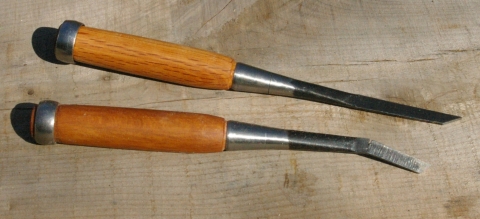Part 1, Part 2, Part 3, Part 4, Part 4.5, (Part 5)
I got the replacement chisel from Grizzly! After all the practice it took longer for the wax mix to heat up than it did to get the handle ready.
I have tested the new one and it is doing fine so far. So my final opinion on the Grizzly Japanese Chisel set is quite good as long as you are willing to work over the handles.
Bob

 A page Dedicated to My Writing
A page Dedicated to My Writing
I’m glad to hear good things about the grizzly chisels as I was considering buying the set to try out.
Have you had any more issues with them?
They are pretty nice after they are worked over. The finest ones may not be up to the task, although the second one I got is fine and Grizzly does support their products. They hold and edge well, and do the job. They are fairly rust prone, so try to store them well.
Bob
Thanks for the info. I’ll wipe them down with some camelia oil after use.
Great post! Thank you for making it. I just received my Grizzly set of 10 chisels. Used a hot plate to get the hoops off. Could you share with me how you shaped them please?
I detailed the basic method here, If the wood is not too large, compressing the wood with an anvil edge and hammer will do. Otherwise either sanding down a touch or shaving a bit off with a chisel will do. To shave with the chisel, I mark what I don’t want to cut with electricians tape, and cut a line right at the tape line. Then I shave off wood. Since I don’t want to split any of the actual grip, all the cutting is done toward the back of the chisel from the tape line.
To smooth and shape them, I cheated quite a bit and used several methods, depending on what seemed best at the time. I taped the metal and the regions I did not want to alter. If the tape became damaged, I replaced it immediately. One method was to tape the end with the ring removed, and put it in a lathe or drill chuck. Then with it spinning slowly I would scrape or sand it to fit. Another method was to sand it free hand. If there was a lot of meat to remove, I pounded the sharp end into a section of wood. Then I put the base in a lathe chuck and then brought the tail stock on the lathe in to match with the wood. This way I could get the tool turning concentrically for turning.
Another method that works really well is to get a sand paper roll, like a plumber uses. Then lock the blade of the chisel in a vise and use the sandpaper like you would buff a shoe. This can do very fast work.
Bob